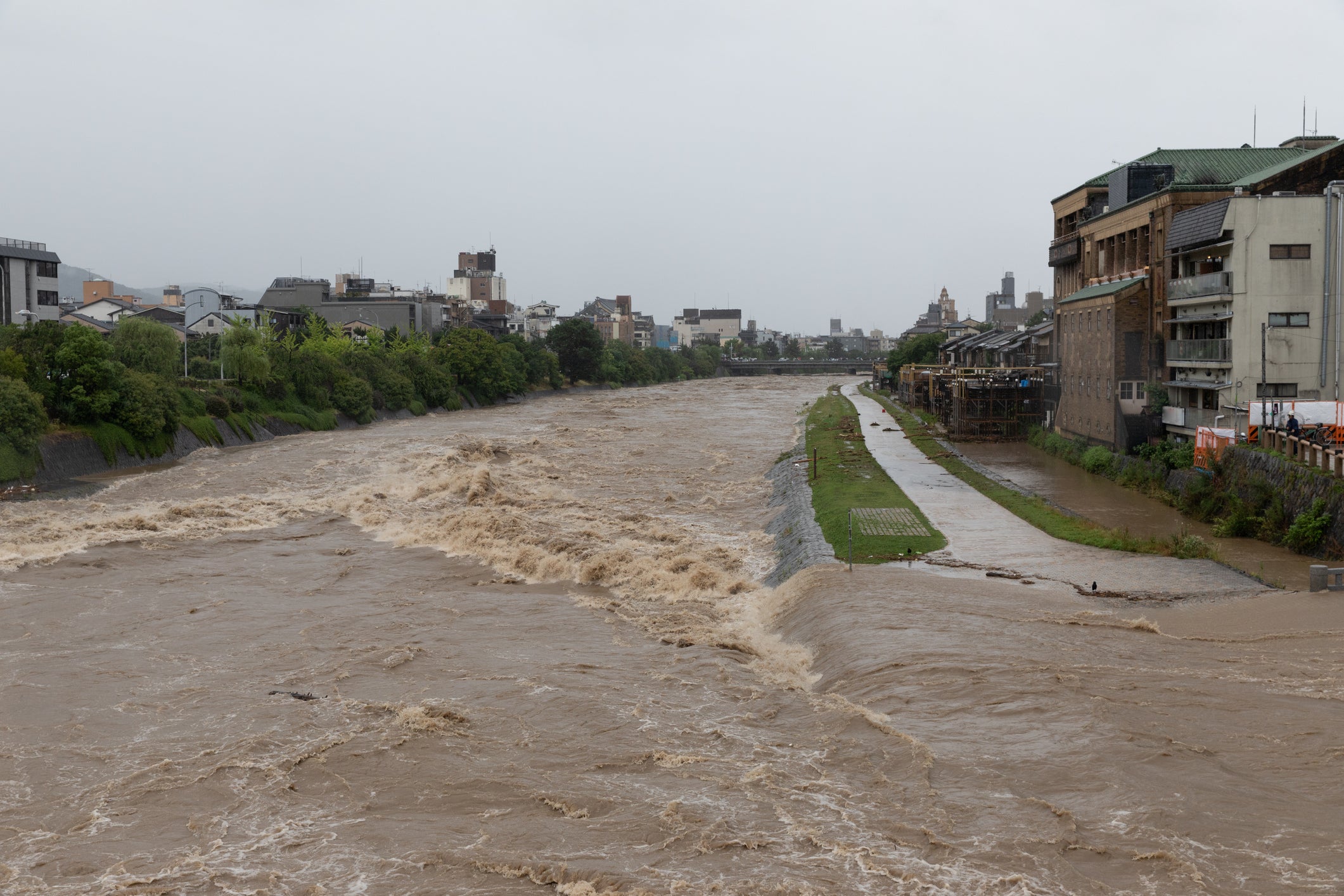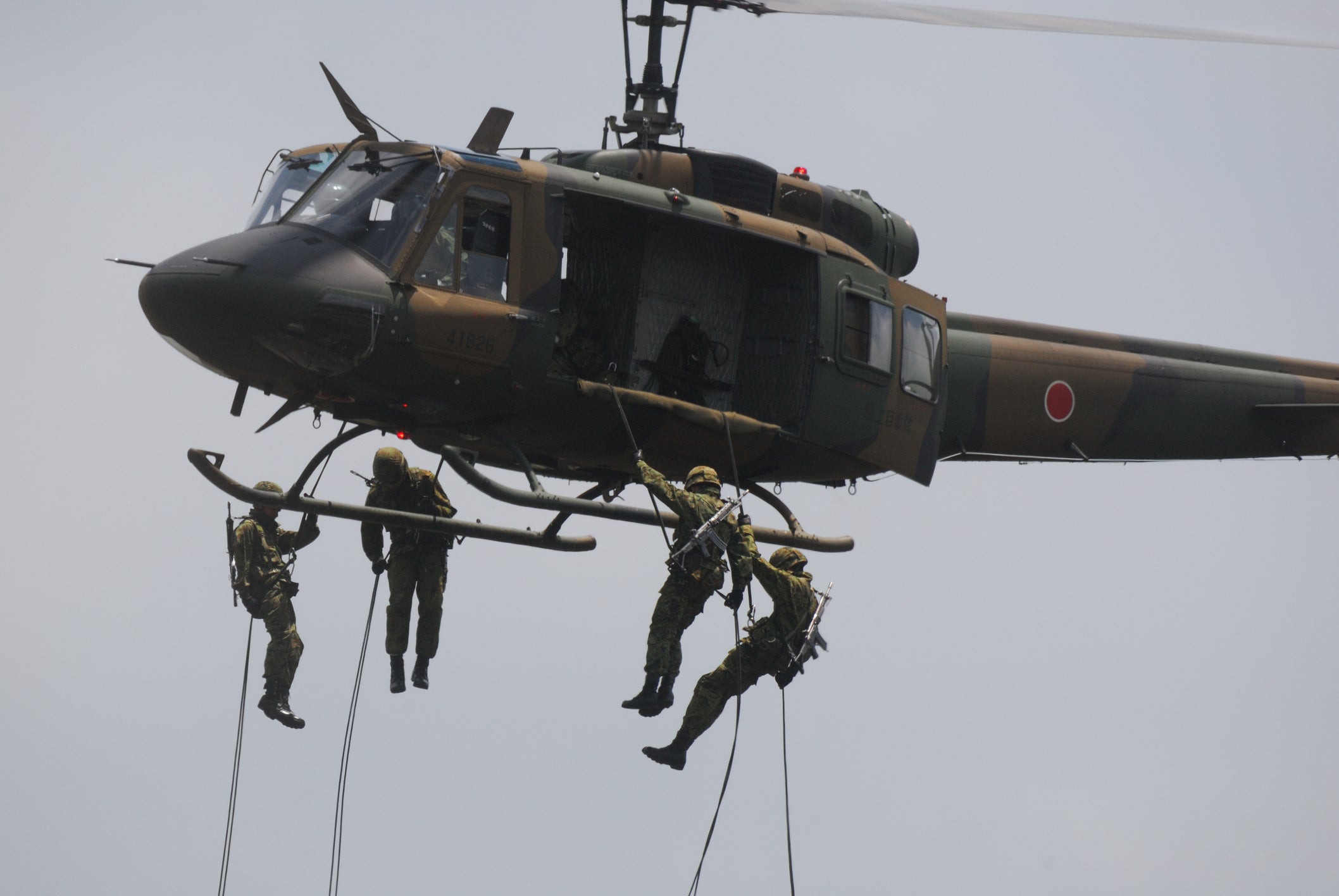Disasters that caused great damage in Japan
table of contents
Introduction
9 natural disasters with large scale damage (since the Heisei era)
summary
Introduction
Japan is known as a country prone to natural disasters. Various disasters such as earthquakes, tsunamis, typhoons, heavy rains, and volcanic eruptions have occurred, causing great damage to people's lives and property. So, out of all the natural disasters that have occurred, which one caused the most damage?
9 natural disasters with large scale damage (since the Heisei era)
Here, we will introduce nine natural disasters that have occurred since the Heisei era that caused significant human damage (number of deaths and missing persons). We refer to data from the last 27 years, from 1993 (Heisei 5 ) to 2019 (Reiwa 1).
Damage caused by earthquakes and tsunamis
[Number of dead and missing : 29,308 ] * Total number of dead and missing due to earthquakes and tsunamis since 1993 (Heisei 5 )
The natural disasters that cause the most damage are earthquakes and tsunamis. Earthquake and tsunami damage does not occur every year. However, once a large earthquake or tsunami occurs, the damage is enormous.
①Tohoku Pacific Coast Earthquake (Great East Japan Earthquake)
March 2011 _
Number of dead and missing : 18,485
More than 43,700 people injured
Approximately 270,000 houses completely and partially destroyed
Total damage: 16 to 25 trillion yen (does not include nuclear disaster and reputational damage)
With a magnitude of 9.0 , it was the largest earthquake ever recorded in Japan, and the fourth largest earthquake in the world since 19003 . Tremors were observed over a wide area, large tsunamis occurred in various parts of Japan, and an accident at a nuclear power plant was combined, resulting in an unprecedented complex disaster.
The Great East Japan Earthquake caused extremely serious damage, with deaths and missing people occurring in 12 prefectures. More than 90 % of the deaths were due to drowning due to the tsunami. As for residential buildings, total destruction occurred in 9 prefectures, with a total number of approximately 130,000 houses, while half-destruction occurred in 12 prefectures, with a total number of approximately 270,000 houses (as announced by the National Police Agency on May 10 , 2013 ). Great damage was caused.
The Great East Japan Earthquakes since the Meiji era include the Great Kanto Earthquake in 1923 ( deaths and missing: approximately 105,000 people) and the Meiji Sanriku Earthquake in 1896 (approximately 22,000 people). ) caused extremely serious damage.
②Great Hanshin-Awaji Earthquake
January 1995
Number of deaths/missing : 6,437
Number of injured : 43,792
Approximately 249,000 houses completely and partially destroyed
Total damage: 9.6 trillion yen (direct damage)
At 5:46 a.m. on January 17 , 1995, a strong earthquake with a magnitude of 7.3 , centered in the northern part of Awaji Island, struck a major city. I attacked. The Great Hanshin-Awaji Earthquake was the first earthquake in Japan to directly hit a city with an aging population and a high concentration of socio-economic functions.
The disaster caused enormous human damage, with 6,436 people dead or missing (including 912 so-called related deaths) and more than 43,700 injured . Due to the extent of the damage, the disruption of information networks, and the paralysis of administrative functions, it took a considerable amount of time for the full extent of the damage to become clear. According to Hyogo Prefectural Police's damage information as of noon on the 17th , six hours after the disaster occurred, 200 people were killed and more than 331 people were missing.
Immediately after the earthquake, 285 fires broke out at the same time, with 7,483 buildings destroyed and an area of 834,663m2 of burned floors, causing major damage, especially in Kobe City. Approximately 105,000 houses were completely destroyed, and approximately 144,000 were partially destroyed.The collapses were concentrated in the eastern part of Kobe's Nagata Ward along the coast, which corresponds to the area where the human damage occurred. I was there.
③Kumamoto Earthquake
April 2016 _
Number of dead and missing: 273 people
Number of injured : 2809
Approximately 43,386 houses completely and partially destroyed
Total damage amount: 3.8 trillion yen
At 21:26 on April 14 , 2016 , an earthquake with a magnitude of 6.5 occurred in the Kumamoto region of Kumamoto Prefecture, with a maximum seismic intensity of 7 observed in Kumamoto Prefecture. The next day, at 1:25 on April 15th , a magnitude 6.4 earthquake occurred in the Kumamoto region of Kumamoto Prefecture, with a seismic intensity of 7 . Then, at 1:25 on April 16th , a magnitude 7.3 earthquake occurred in the Aso region of Kumamoto Prefecture, with a seismic intensity of 7 . These three earthquakes all occurred in almost the same fault zone, and were so-called "direct earthquakes."
In the Kumamoto earthquake, 273 people were killed or missing in Kumamoto and Oita prefectures. Approximately half of the deaths were caused by collapsed buildings and falling objects. There were also many related deaths from heart attacks and stress. The number of injured reached 2,809 . Approximately 18,000 houses were completely destroyed and approximately 25,000 were partially destroyed. Especially in Kumamoto City and Mashiki Town, many old wooden houses collapsed.
The Kumamoto Earthquake caused many large-scale landslides and slope failures. At Mt. Aso in particular, the slopes around the crater collapsed, scattering huge chunks of rock. Transportation infrastructure such as Aso Bridge and National Route 57 was also damaged. Furthermore, historical buildings and cultural properties such as Kumamoto Castle and Suizenji Jojuen Garden were also seriously damaged.
④Hokkaido Eastern Iburi Earthquake
September 2018 (Heisei 30 )
Number of dead and missing: 44 people
785 people injured
Approximately 10,000 houses completely and partially destroyed
Total damage amount: 1.5 trillion yen
At 3:08 on September 6 , 2018 , a magnitude 6.7 earthquake occurred with its epicenter in eastern Iburi, Hokkaido. This earthquake was a direct earthquake that occurred at a shallow depth of approximately 37 km . Strong shaking was observed throughout Hokkaido, with the maximum seismic intensity of 7 recorded in Atsuma Town.
In the Hokkaido Eastern Iburi Earthquake, 44 people were killed or missing in Hokkaido. Approximately half of the deaths were due to landslides and slope failures. The number of injured reached 785 . Approximately 2,000 houses were completely destroyed, and approximately 8,000 were partially destroyed.
The Hokkaido Eastern Iburi Earthquake caused landslides and slope failures over a wide area. Particularly in Atsuma Town, the mountain surrounding Atsuma Dam collapsed on a large scale, damming the river and forming an artificial lake. In addition, the Tomato-Atsuma Thermal Power Plant, Hokkaido's main thermal power plant, was shut down, causing a large-scale power outage across Hokkaido. The power outage affected up to approximately 2.9 million homes, greatly impacting lifelines such as transportation, communications, and medical care.
⑤Niigata Prefecture Chuetsu Earthquake
October 2004 _
68 people dead/missing
Number of injured : 4,805
Approximately 12,000 houses completely and partially destroyed
Total damage amount: 1.3 trillion yen
At 17:56 on October 23, 2004 , a magnitude 6.8 earthquake occurred with its epicenter in the Chuetsu region of Niigata Prefecture. This earthquake was a direct earthquake that occurred at a shallow depth of approximately 17 km . Strong shaking was observed in Niigata and Nagano prefectures, with Ojiya City recording the maximum seismic intensity of 6+ .
In the Niigata Prefecture Chuetsu Earthquake, 68 people were killed or missing in Niigata Prefecture. Approximately half of the deaths were caused by collapsed buildings and falling objects. The number of injured reached 4,805 . Approximately 3,000 houses were completely destroyed, and approximately 9,000 were partially destroyed.
During the Niigata Prefecture Chuetsu Earthquake, landslides and slope failures occurred frequently. Particularly in Ojiya City, landslides occurred, damming rivers and forming artificial lakes. Additionally, liquefaction occurred over a wide area in Niigata City, causing roads and buildings to subside. Additionally, railroads such as the Joetsu Shinkansen and conventional lines suffered significant damage.
⑥Iwate-Miyagi Nairiku Earthquake
June 2008 _
23 people dead/missing
2,291 people injured
Approximately 7,000 houses completely and partially destroyed
Total damage amount: 0.9 trillion yen
At 8:43 am on June 14 , 2008 , a magnitude 7.2 earthquake occurred with its epicenter in the southern inland area of Iwate Prefecture. This earthquake was a direct earthquake that occurred at a shallow depth of approximately 8 km . Strong shaking was observed in Iwate and Miyagi prefectures, with the maximum seismic intensity of 6+ being recorded in Esashi Ward, Oshu City.
In the Iwate-Miyagi Nairiku Earthquake, 23 people were killed or missing in Iwate and Miyagi prefectures. Approximately half of the deaths were due to landslides and slope failures. The number of injured reached 2,291 . Approximately 1,000 houses were completely destroyed, and approximately 6,000 were partially destroyed.
The Iwate-Miyagi Nairiku Earthquake caused many landslides and slope failures. Especially in Oshu City, landslides occurred, damming rivers and forming artificial lakes. Additionally, liquefaction occurred over a wide area in Morioka City, causing roads and buildings to subside. In addition, railways such as the Tohoku Shinkansen and conventional lines suffered significant damage.
⑦Niigata Prefecture Chuetsu-Oki Earthquake
July 2007 _
Number of dead/missing: 15
2,290 people injured
Approximately 13,000 houses completely and partially destroyed
Total damage amount: 0.8 trillion yen
At 10:13 on July 16 , 2007, a magnitude 6.8 earthquake occurred with its epicenter off the coast of Chuetsu, Niigata Prefecture. This earthquake was a subduction zone earthquake that occurred at a shallow depth of approximately 17 km . Strong shaking was observed in Niigata and Nagano prefectures, with Kashiwazaki City recording the maximum seismic intensity of 6+ .
In the Niigata Prefecture Chuetsu-oki Earthquake, 15 people were found dead or missing in Niigata Prefecture. Approximately half of the deaths were caused by collapsed buildings and falling objects. The number of injured reached 2,290 . Approximately 3,000 houses were completely destroyed, and approximately 10,000 were partially destroyed.
The Niigata Prefecture Chuetsu-Oki Earthquake caused fires and landslides. In Kashiwazaki City in particular, a fire occurred at the Kashiwazaki-Kariwa Nuclear Power Plant, raising concerns about nuclear safety. In addition, liquefaction occurred over a wide area in Kashiwazaki City, Nagaoka City, and other cities, causing roads and buildings to subside. Additionally, railroads such as the Joetsu Shinkansen and conventional lines suffered significant damage.
⑧Fukui Prefecture Chubu Earthquake
June 2007 _
1 person dead/missing
Number of injured : 356
Approximately 6,000 houses completely and partially destroyed
Total damage amount: 0.5 trillion yen
At 9:42 am on June 18 , 2007 , a magnitude 6.8 earthquake occurred with its epicenter in central Fukui Prefecture. This earthquake was a direct earthquake that occurred at a shallow depth of about 10 km . Strong shaking was observed in Fukui and Ishikawa prefectures, with the maximum seismic intensity of 6+ being recorded in Fukui City.
In the Fukui Prefecture Chubu Earthquake, one person was found dead or missing in Fukui Prefecture. The deaths were caused by the building collapse. The number of injured reached 356 . Approximately 1,000 houses were completely destroyed and approximately 5,000 were partially destroyed.
The Fukui Prefecture Chubu Earthquake caused fires and landslides. In Fukui City in particular, liquefaction occurred over a wide area, causing roads and buildings to subside. Transportation infrastructure such as the Hokuriku Expressway and conventional lines was also damaged. Furthermore, nuclear facilities such as the Mihama Nuclear Power Plant and the fast breeder reactor Monju were also damaged.
⑨Northern Nagano Prefecture Earthquake
November 2014 _
Number of deaths/missing: 0
Number of injured: 41
Approximately 4,000 houses completely and partially destroyed
Total damage amount: 0.3 trillion yen
At 22:08 on November 22 , 2014, a magnitude 6.7 earthquake occurred with its epicenter in northern Nagano Prefecture. This earthquake was a direct earthquake that occurred at a shallow depth of about 10 km . Strong shaking was observed in Nagano and Niigata prefectures, with the maximum seismic intensity of 6+ being recorded in Otari Village.
There were no deaths or missing people in the northern Nagano Prefecture earthquake. The number of injured reached 41 . Approximately 500 houses were completely destroyed, and approximately 3,500 were partially destroyed.
The Northern Nagano Prefecture Earthquake caused many landslides and slope failures. Particularly in Otari Village, a landslide occurred, damming a river and forming an artificial lake. Transportation infrastructure such as the Joshinetsu Expressway and the Hokuriku Shinkansen were also damaged.
summary
・Of all the natural disasters that have occurred since the Heisei era, the one that caused the most damage was the Tohoku Pacific Coast Earthquake (Great East Japan Earthquake). The number of people killed and missing reached 18,485 , and the total damage amounted to 16 to 25 trillion yen.
・Damage caused by earthquakes and tsunamis was overwhelmingly large, with 6 out of 9 disasters being caused by earthquakes and tsunamis. Nadir earthquakes and subduction zone earthquakes were particularly dangerous and sometimes difficult to predict.
Many secondary disasters such as landslides, slope failures, and liquefaction phenomena also occurred, increasing human casualties and infrastructure damage. Especially in mountainous and coastal areas, rivers were sometimes dammed due to landslides or tsunamis, resulting in the formation of artificial lakes.
・Important facilities such as nuclear power plants and Shinkansen trains were also damaged. In particular, during the Great East Japan Earthquake, a meltdown occurred at the Fukushima Daiichi Nuclear Power Plant, causing problems with radioactive contamination.
Measures against natural disasters include the following:
・Raise disaster prevention awareness and promote disaster prevention education
・Collecting and sharing disaster prevention information
・Development of evacuation plan and training
・Preparation of earthquake resistance and disaster prevention equipment
・Support for rescue and recovery activities during disasters








